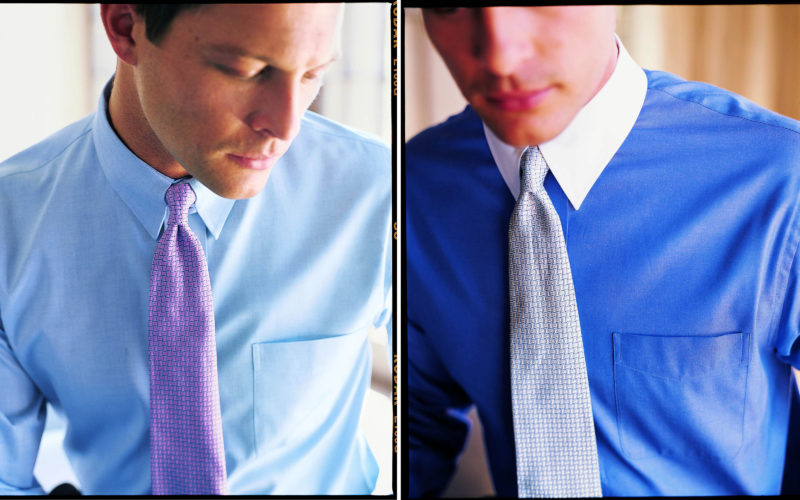Q. My grandmother told me that she knew how to “turn a collar” on a man’s shirt. Do people still do that? If so, should I let my grandmother turn the collar on my best (but oldest) shirt? It’s in fine condition, all but the collar.
A. Turning a collar is indeed an old fashioned term, but the concept still makes sense and it is still being done. Though wearing a frayed collar may seem like a small detail, it is apparent to anyone who sees it and does not reflect well on you. If you wish to continue wearing an otherwise fine shirt without embarrassment, this is a smart way to go
Very often a man’s favorite shirt frays at the collar and gets worn looking, while everything else about the shirt is still in perfectly good condition. Collars take the most abuse because that’s where the fold is repeatedly ironed, because when starch is used on collars it wears down the fabric, and also because a man’s beard or stubble rubs the fabric and puts more strain on it there.
Back in the days when your grandmother turned those collars, good men’s dress shirts might cost as little as $25. Today, when a great many fine ready-made shirts cost from $70 to $250, it’s not unusual to find top quality shirts for $250 at Brooks Brothers, and designer shirts at Ralph Lauren go up to $600. Obviously, you can find tons of shirts from major brands at far better prices out there, but this sort of pricing is not unique. So, if your shirt is a luxury brand and you are fond of it, why would you want to throw it away (and then shop for a replacement) just because the collar has frayed?
Turning the collar of a shirt is just what it sounds like. The collar is removed and reversed, so that the inside is out and the outside is in. This can be problematic with shirts that have those tiny pockets/slots for collar stays. Even so, a tailor can generally replace one side of the collar with fabric from the shirt’s tail. Obviously, this is not a simple or inexpensive project.
A more drastic step is to totally replace the collar. A few years back, colored dress shirts with contrasting white collars were a popular dressy look (see Michael Douglas in “Wall Street”). The style is less popular today, but not actually out of date. Since matching fabric won’t be readily available (and would not match anyway, given the number of washes the shirt would have been through), a white contrast collar may be a good option. Or, if the shirt tails are long enough, a new matching collar can be made. Again, these options come with a significant cost; but if you’re dealing with a very fine shirt, it may be worth it.
Because not everyone’s grandmother can do this, and the local seamstress is not up to doing a perfect job, I often suggest a professional establishment that has for years been making this and other types of alterations, L. Allmeier. These professional shirt surgeons can be trusted with anything that can be done to a shirt: turning a collar, replacing collars and cuffs, adjusting the neck size, shortening sleeves, tapering, and monogramming. Individuals as well as fine men’s shops have been sending them shirts from across the country for decades. (Email them at Shirtdoc@gmail.com or 516-652-3232). At the moment, they are temporarily concentrating on making face masks.)
The various types of shirt collar repairs are not easy. Seriously labor-intensive work, they are usually rather expensive. Allmeier charges $30 to turn a collar and $50 to replace a collar. When they are through with your shirt, it looks like new. Depending upon whether or not a shirt was expensive when it was new and also how much you enjoy wearing it, the decision of whether to repair it can be an easy one. If it is cost effective, this sort of repair can be a worthwhile investment.
As for your grandmother, or a personal tailor one believes is capable of making this change, to test the quality and success you find, why not first try one of your shirts that is not an absolute favorite? If you are happy with the results, I’m sure either would be pleased to do another one for you.
Please send your men’s dress and grooming questions to MALE CALL: Lois.Fenton@prodigy.net









